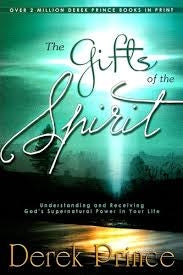The verse states, “For the word of God is living and active and sharper than any two-edged sword, piercing even to the dividing of soul and spirit, of both joints and marrow, and is able to discern the thoughts and intentions of the heart.”
It’s Hebrews 4:12, and it draws that distinction, not always clear in Church instruction, between “soul” and “spirit.”
This came to mind when a reputed expert in spiritual deliverance made the fascinating or perhaps strange claim that when one prays to part the spirit from the soul, demons suddenly come to the fore and–now seen–can be more readily cast away. In other words, that spirits seem to hide or reside between the body, soul, and spirit.
“Now may the God of peace Himself sanctify you entirely; and may your spirit and soul and body be kept complete, without blame at the coming of our Lord Jesus Christ,” intones 1 Thessalonians 5:23.
“Soul”? “Spirit”?
Is there actually a distinction?
How might one be different from another?
Might the soul be an intermediary between spirit–our essential, immortal selves–and the body we inhabit while on this planet?
In common vernacular, you sometimes hear a person described as “soulish” to mean being controlled by emotions and the senses “rather than the spirit,” one online resource tells us. A “soulish” person might thus be described as someone who is easily swayed by emotions, or who prioritizes material possessions and worldly pleasures over spiritual matters.
When “soulish” represents worldly or non-spiritual attitudes and behavior, perhaps the deliverance expert’s view is true.
The Greek word “psychikos” is often used to describe the “soulish” person, and the word “pneumatikos” is used to describe the “spiritual” person. Occultists perhaps would call the soul the “astral body.”
What does the Catechism say?
“The unity of soul and body is so profound that if one has to consider the soul to be the ‘form’ of the body, i.e. it is because of its spiritual soul that the body made of matter becomes a living, human body; spirit and matter, in man, are not two natures united, but rather their union forms a single nature.
“The Church teaches that every spiritual soul is created immediately by God—it is not ‘produced’ by the parents—and also that it is immortal: it does not perish when it separates from the body at death, and it will be reunited with the body at the final Resurrection.”
“Mary went to Heaven ‘body and soul,'” says the introduction to the Catechism, perhaps making things clearer. “The soul, the ‘seed of eternity we bear in ourselves, irreducible to the merely material,’ can have its origin only in God.”
This indicates, we can see, that soul and spirit are one and the same.
“Sometimes the soul is distinguished from the spirit: St. Paul for instance prays that God may sanctify his people ‘wholly,’ with ‘spirit and soul and body’ kept sound and blameless at the Lord’s coming,” the Catechism says. “The Church teaches that this distinction does not introduce a duality into the soul. ‘Spirit’ signifies that from creation man is ordered to a supernatural end and that his soul can gratuitously be raised beyond all it deserves to communion with God.”
“What the soul is to the human body,” the Catechism further deduces, “the Holy Spirit is to the Body of Christ, which is the Church.”
And so we have that!
A famous Anglican scholar (and also deliverance expert) had a somewhat different way of explaining it.
“In the original pattern of Creation, the spirit of man came directly from God, related directly to God, and enjoyed a perfect ordered relationship with God,” wrote Derek Prince. “God moved upon man’s spirit; man’s spirit moved upon his soul; and his soul directed his body. Through the devastating effects of man’s rebellion, however, his spirit was compromised, and his soul took over control. As a result, unregenerate man is now controlled by the three functions of his soul: the will, the intellect, and the emotions.
“When God reconciles a person to Himself, His purpose is to restore the original order, by which He once again relates directly to the person’s spirit, whose spirit in turn moves upon his soul, and the soul moves upon the body.”
“The human person, created in the image of God, is a being at once corporeal and spiritual,” says the Church. “The biblical account expresses this reality in symbolic language when it affirms that ‘then the LORD God formed man of dust from the ground, and breathed into his nostrils the breath of life; and man became a living being.”
In Sacred Scripture we’re taught, the term “soul” often refers to human life or the entire human person. But “soul” also refers to the innermost aspect of man, that which is of greatest value in him, that by which he is most especially in God’s image: “soul” signifies the spiritual principle in man.
Might parting that indeed reveal spirits hiding behind the scene?
“In death, the separation of the soul from the body, the human body decays and the soul goes to meet God, while awaiting its reunion with its glorified body,” states the Catechism.
We’ll leave it at that interpretation.
[resources: Derek Prince books; recommended]


